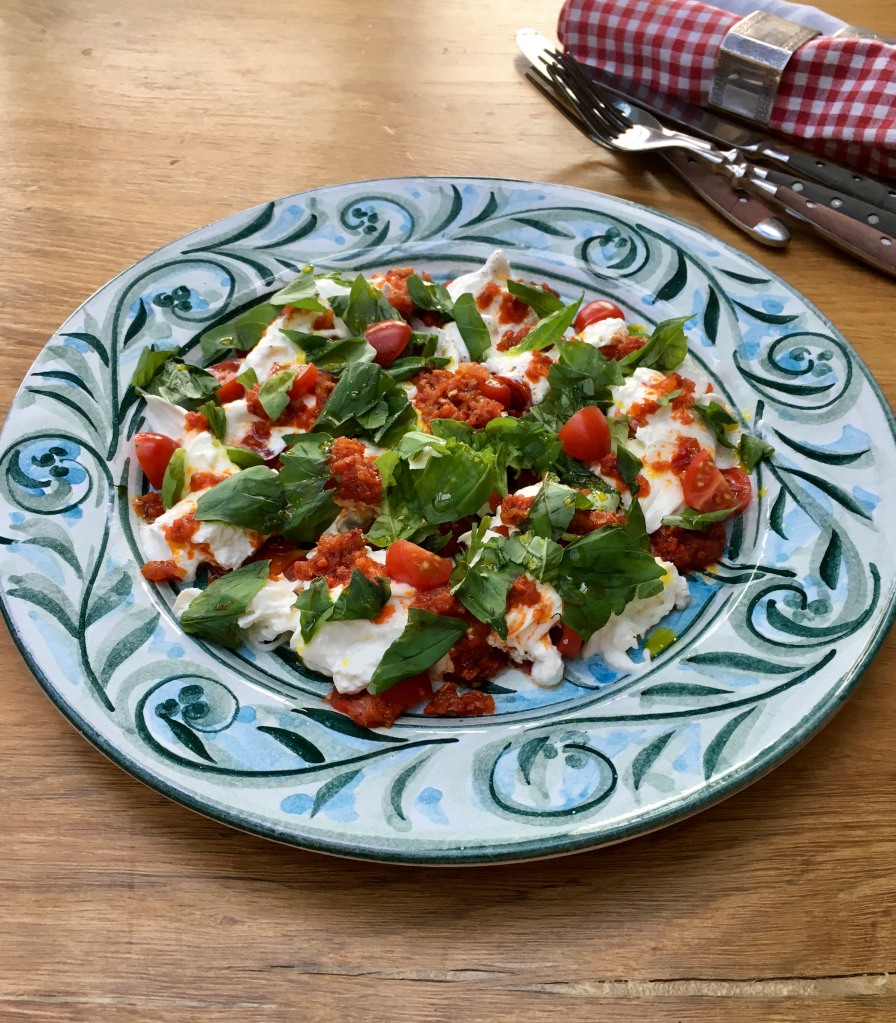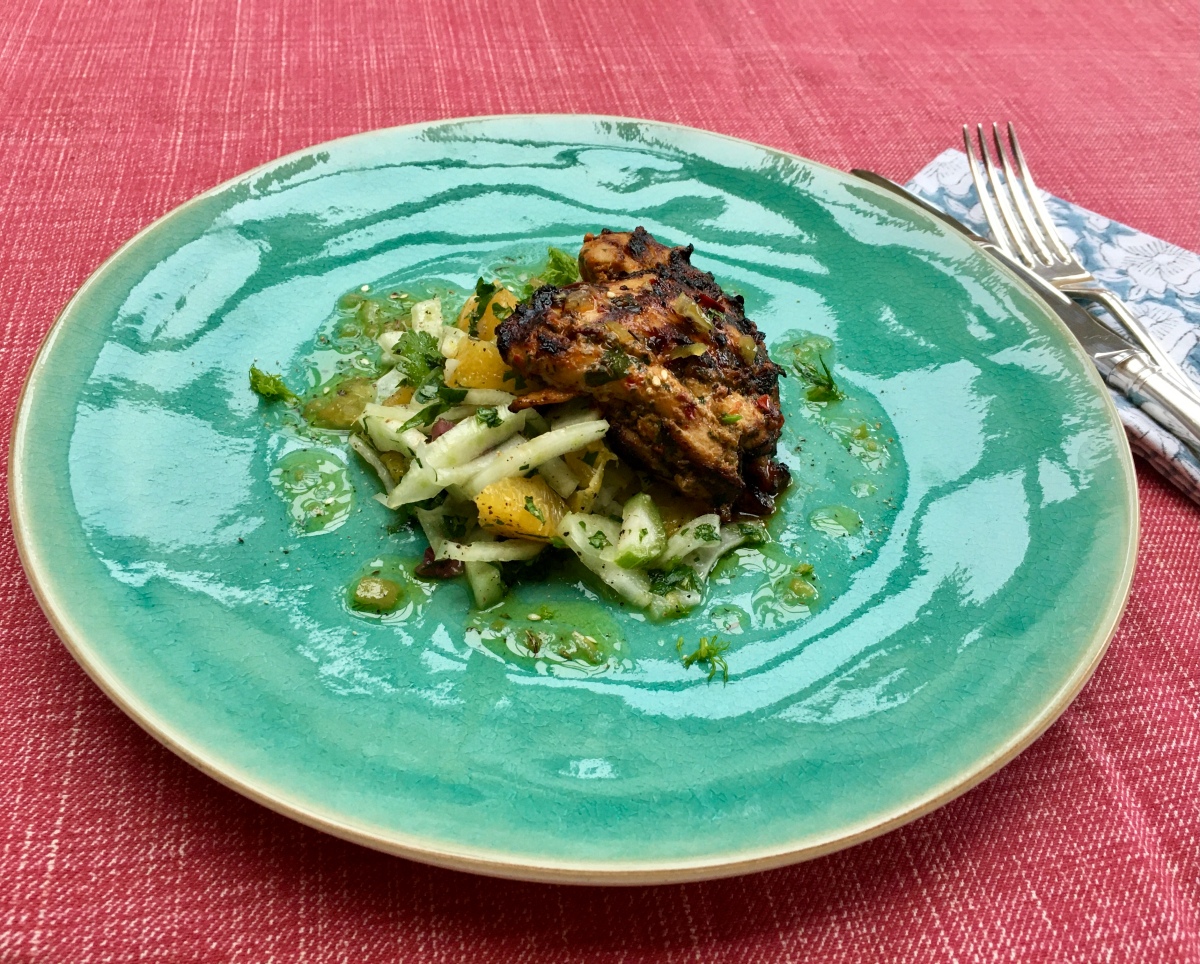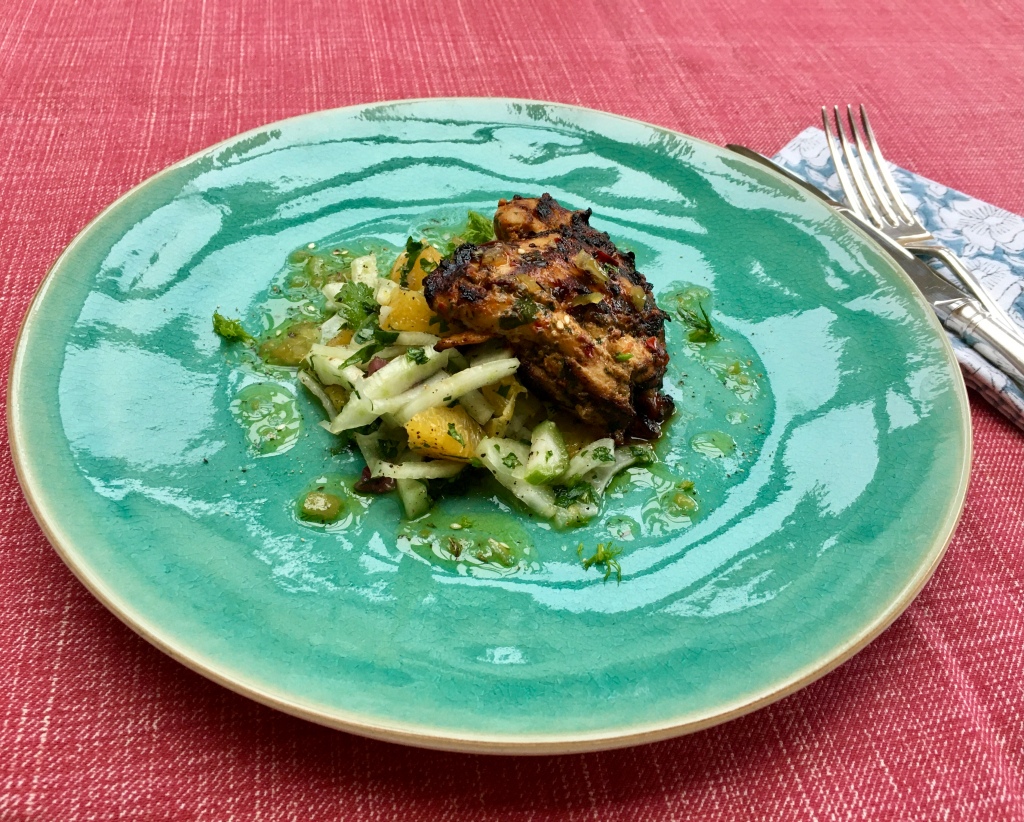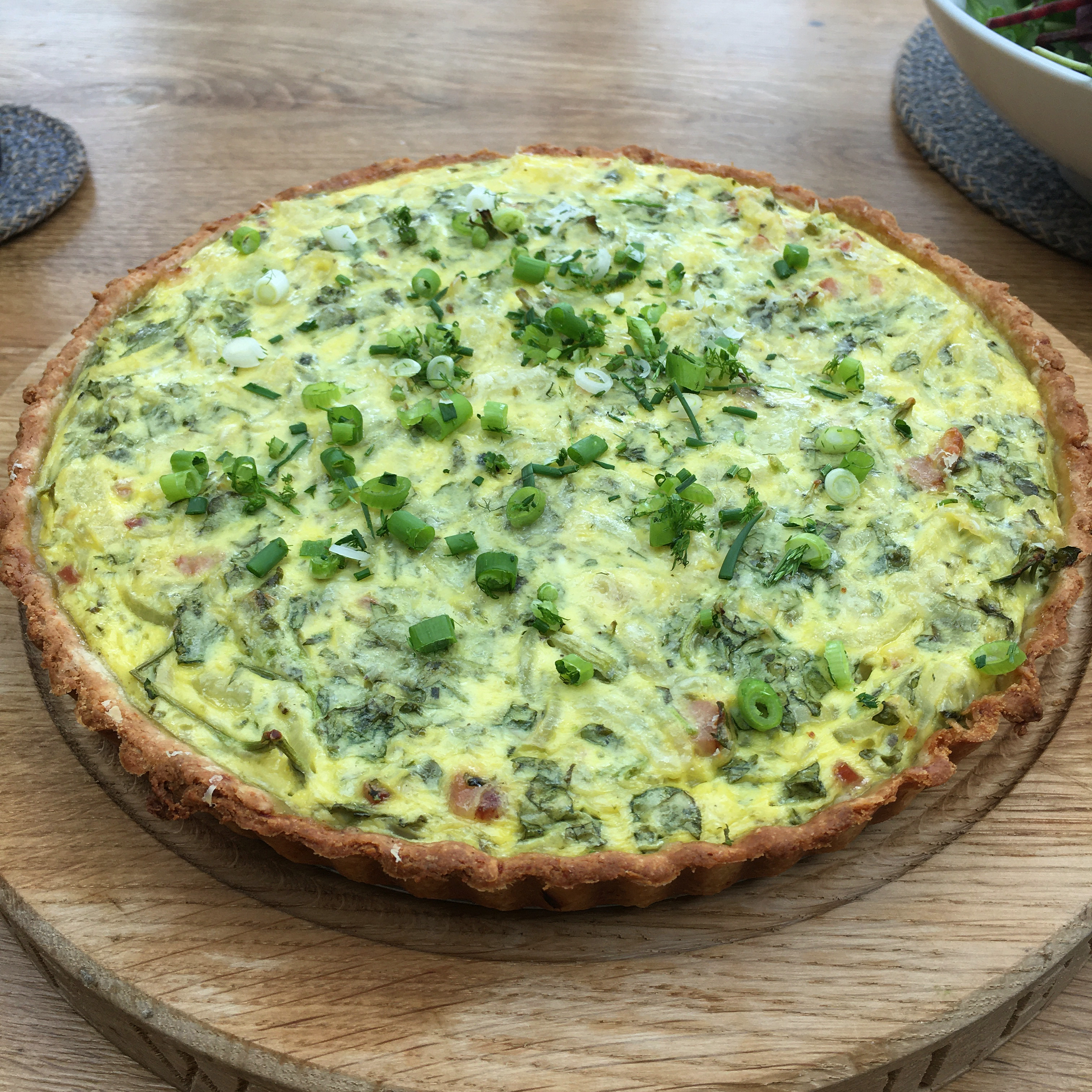My favourite, old fashioned pudding cake that never seems to date and is always greeted with delight. It seems that some traditions stand the test of time. Simple, sharp lemon mousse in a sandwich of unashamedly basic whisked sponge. A little bit of effort is required, but you can make it two days ahead and it freezes well, so all in all a very useful recipe to have up your sleeve.
CAKE
65g caster sugar
2 large eggs, separated
1 large lemon
1 level tablespoon ground almonds
2 level tablespoons semolina
1 level tablespoons sifted plain white flour
MOUSSE
2 large lemons, rind and juice
4 leaves gelatine
3 large eggs, separated
125g caster sugar
150ml double cream
Before you start, take an 8″ springform cake tin. Grease it and line the base and sides with baking parchment. Then grease that and dust the inside with flour and caster sugar. Shake out over the sink so it is very evenly distributed.
First make the cake. Pre-heat the oven to 180c or 170c fan.
Whisk the egg yolks and sugar together with the rind of the lemon until thick and pale. Fold in the ground almonds, semolina and the flour along with one tablespoon of lemon juice. Use a large metal spoon for this, it is so much better than a plastic spatula.
Whisk the egg whites until stiff peaks form. Stir a small spoonful of the white into the hold mixture to lighten it. Then fold in the remainder. Spoon into the cake tin and even out the top, pushing it right into the edges of the tin. Bake for about 20 – 25 mins until firm. Turn out and cool on a wire rack.
While the cake is cooling make the mousse. Put three tablespoons of lemon juice into a small saucepan. Add a tablespoon of cold water. Meanwhile, soak the gelatine leaves in a bowl of cold water making sure the leaves are all covered. Whisk together the egg yolks, sugar and lemon rind until thick. Then add in the juice of the remaining lemon. You will have to carry on whisking for a while until it thickens up a bit.
Warm up the lemon juice that is set aside in the saucepan. Squeeze the gelatine out in your hands (it will now be soft). Pull the saucepan off the heat and stir the gelatine in until it has dissolved. Be very careful that the liquid is not boiling. Cool for a few minutes and then whisk into the egg yolk mixture. Whip the cream until it just holds it’s shape (the minute you see a hint of graininess stop whisking) and fold into the gelatine/egg mix. Then whisk the egg whites to soft peaks, stir a spoonful into the mix and then fold in the rest, being careful not to knock out any air.
Slice the cake into two horizontally. Re – line the cake tin with more baking parchment and put the best looking cake round into the base so that the presentation top is on the base (mine was the wrong way round in this picture, I got confused but icing sugar covers a multitude of sins).
Pour the mousse over the cake and smooth the top. Place the other cake round on top of that. The cake will probably have shrunk in from the sides, so it won’t reach right to the edge but it doesn’t matter.
Cover with a plate, or something and put into the fridge for a good few hours or overnight. Once set, take the springform sides of the tin away and peel off the paper. Then invert the cake onto your serving plate. You may need a bit of help. dust with icing sugar and decorate with edible flowers and/or berries.








